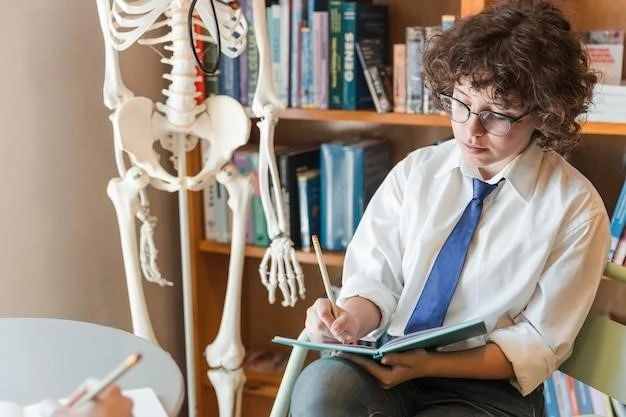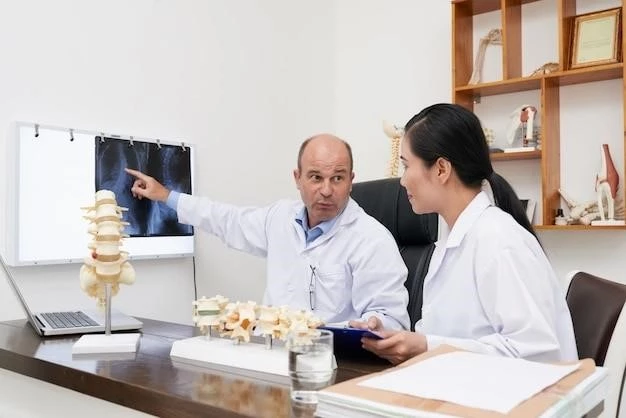Understanding Dysostosis
Dysostosis refers to a group of rare skeletal abnormalities caused by genetic mutations, leading to abnormal bone development. This article delves into the complexities of dysostosis, exploring the impact on the musculoskeletal system, available medical treatments, challenges in symptom management, and the role of genetic testing and physical therapy in addressing bone growth complications.
Introduction to Dysostosis
Dysostosis is a group of congenital anomalies characterized by skeletal abnormalities resulting from genetic mutations affecting bone development. These orthopedic conditions manifest as rare diseases marked by various skeletal deformities. Individuals with dysostosis may exhibit unique physical features due to these hereditary disorders. Genetic mutations play a significant role in the pathogenesis of dysostosis, impacting the musculoskeletal system.
Understanding dysostosis requires insight into the complexity of bone disorders, which can present challenges in diagnosis and medical treatment. Symptoms of dysostosis may vary widely, leading to complications in managing the condition effectively. Genetic testing plays a crucial role in identifying specific mutations associated with dysostosis, aiding in accurate diagnosis and treatment planning.
Patients with dysostosis often require multidisciplinary care, including orthopedic specialists, physical therapists, and genetic counselors, to address the diverse clinical manifestations of the disorder. The management of dysostosis involves a holistic approach focused on symptom alleviation, bone growth complications, and enhancing the quality of life for individuals affected by these rare skeletal conditions.
Types of Dysostosis
Dysostosis encompasses a spectrum of skeletal abnormalities classified into various types based on the specific characteristics of bone disorders. Some common types of dysostosis include Cleidocranial Dysostosis, Pfeiffer Syndrome, and Osteogenesis Imperfecta. Cleidocranial Dysostosis is characterized by abnormalities in the collarbone and skull, leading to distinct physical features.
Pfeiffer Syndrome presents with abnormalities in the skull and facial structure, often accompanied by fusion of certain bones in the hands and feet. Osteogenesis Imperfecta, also known as brittle bone disease, is marked by fragile bones prone to fractures due to a defect in collagen production. Each type of dysostosis presents unique challenges in diagnosis and management.
Other rare types of dysostosis include Craniofacial Dysostosis, Ellis-van Creveld Syndrome, and Campomelic Dysplasia, each with specific skeletal manifestations that impact bone development and musculoskeletal function. Understanding the distinct features of these dysostosis subtypes is vital for tailored treatment strategies and comprehensive care for individuals affected by these complex genetic bone disorders.
Causes and Risk Factors
The primary cause of dysostosis is genetic mutations that disrupt the normal process of bone development, leading to skeletal abnormalities and congenital anomalies. These mutations can be inherited from one or both parents or arise spontaneously. Risk factors for dysostosis include a family history of bone disorders or hereditary conditions impacting bone growth.
Specific genes associated with dysostosis play a critical role in regulating skeletal development, and mutations in these genes can result in diverse orthopedic abnormalities. Environmental factors may also influence the expression of these genetic mutations, contributing to the variability in symptoms and severity of dysostosis.
Understanding the underlying causes and risk factors of dysostosis is essential for early detection and intervention. Genetic counseling can help individuals at risk of hereditary bone disorders assess their likelihood of passing on genetic mutations to future generations. By identifying genetic factors and environmental triggers, healthcare providers can offer tailored management strategies to address the complex nature of dysostosis.
Symptoms and Diagnosis
Symptoms of dysostosis vary depending on the specific type and severity of the skeletal abnormalities. Common manifestations may include abnormal bone shape, limb deformities, short stature, joint stiffness, and facial irregularities. Individuals with dysostosis may experience skeletal pain, fractures, and limitations in mobility due to musculoskeletal challenges.
Diagnosing dysostosis involves a comprehensive evaluation of the patient’s medical history, clinical symptoms, and imaging studies such as X-rays, CT scans, or MRIs to assess skeletal abnormalities. Genetic testing plays a crucial role in confirming the presence of specific genetic mutations associated with dysostosis, aiding in accurate diagnosis and personalized treatment planning.
Early detection of dysostosis is essential for initiating timely interventions to manage symptoms and minimize complications related to abnormal bone development. Healthcare professionals specializing in orthopedic conditions and rare diseases can collaborate to provide a multidisciplinary approach to diagnosis and treatment, ensuring optimal care for individuals affected by dysostosis.
Treatment Options
Medical treatment for dysostosis focuses on managing symptoms, improving quality of life, and addressing skeletal abnormalities associated with abnormal bone development. Orthopedic interventions such as braces, splints, or corrective surgery may be recommended to enhance mobility and correct deformities.
Physical therapy plays a crucial role in strengthening muscles, improving range of motion, and promoting optimal function of the musculoskeletal system in individuals with dysostosis. Therapeutic exercises tailored to the specific needs of the patient can help alleviate pain, enhance flexibility, and support overall physical well-being.
In severe cases of dysostosis, surgical procedures may be necessary to address complex skeletal deformities or correct bone growth complications. Surgeons specializing in orthopedic conditions can perform procedures to realign bones, stabilize fractures, or improve joint function, enhancing the patient’s functional abilities and quality of life.
Additionally, ongoing monitoring by healthcare providers is essential to track the progression of dysostosis, adjust treatment plans as needed, and address any emerging complications related to abnormal bone development. Collaborating with a multidisciplinary team comprising orthopedic specialists, physical therapists, and genetic counselors can ensure comprehensive care for individuals with dysostosis.
Challenges in Managing Dysostosis
Managing dysostosis presents various challenges due to the complexity of skeletal abnormalities and the diverse clinical manifestations of the disorder. Individuals with dysostosis may experience physical limitations, chronic pain, and psychological impact stemming from the skeletal deformities.

One of the key challenges in managing dysostosis is the variability in symptoms and disease progression among affected individuals, requiring personalized treatment plans tailored to address specific orthopedic needs. Moreover, the rarity of dysostosis can make it challenging to access specialized care and resources for effective symptom management.
Complications such as recurrent fractures, joint dislocations, and spinal abnormalities in dysostosis patients can further complicate treatment strategies and necessitate ongoing monitoring by healthcare professionals to prevent long-term musculoskeletal issues. Coordinating care among different medical specialties is essential to address the multifaceted aspects of dysostosis and optimize patient outcomes.
Educating patients, families, and caregivers about the implications of dysostosis, treatment options, and symptom management strategies is crucial for enhancing overall quality of life and promoting holistic well-being. Overcoming the challenges in managing dysostosis requires a collaborative approach that prioritizes individualized care, ongoing support, and a comprehensive understanding of the complexities associated with rare genetic bone disorders.
Coping Strategies for Patients and Families
Coping with dysostosis can be challenging for patients and their families, given the lifelong impact of skeletal abnormalities and the complex nature of managing musculoskeletal conditions. It is essential to establish a strong support network comprising healthcare professionals, support groups, and mental health providers to navigate the physical and emotional challenges associated with dysostosis.
Patients with dysostosis and their families can benefit from counseling services to address psychological distress, anxiety, and feelings of isolation that may arise from living with a rare genetic bone disorder. Building resilience, developing coping mechanisms, and fostering a positive outlook can help individuals with dysostosis face the unique challenges imposed by their condition.
Educating patients and families about the importance of self-care, adaptive strategies, and accessing community resources can empower them to actively participate in the management of dysostosis. Embracing a proactive approach to holistic well-being, including engaging in physical activities suitable for individual limitations and maintaining a balanced lifestyle, can enhance overall quality of life for individuals with dysostosis.
Fostering open communication, advocating for patient rights, and promoting awareness about dysostosis in the broader community can reduce stigma, promote acceptance, and provide a supportive environment for individuals affected by rare genetic bone disorders. By embracing coping strategies that prioritize mental health, resilience, and social support, patients and families can better navigate the challenges associated with dysostosis and enhance their overall well-being.
Research and Future Directions
Ongoing research in the field of dysostosis focuses on advancing our understanding of the genetic mutations and molecular pathways responsible for abnormal bone development. Investigating novel treatment modalities, such as gene therapy and targeted interventions, aims to address the underlying causes of dysostosis and enhance therapeutic outcomes.
Genetic studies play a pivotal role in identifying new genetic markers associated with dysostosis subtypes, enabling early diagnosis, personalized treatment approaches, and genetic counseling for families at risk of hereditary bone disorders. Research efforts also aim to elucidate the complex interactions between genetic and environmental factors influencing the variability of dysostosis presentations.
Future directions in dysostosis research involve exploring innovative technologies, such as 3D printing and bioengineering, to develop customized orthopedic solutions for individuals with complex skeletal deformities. Collaborative research initiatives between academic institutions, healthcare providers, and patient advocacy groups drive progress in advancing diagnostic tools, treatment options, and ultimately improving patient outcomes in the field of dysostosis.
By investing in cutting-edge research, promoting interdisciplinary collaborations, and prioritizing patient-centered approaches, the future holds promising prospects for individuals affected by dysostosis. Enhancing our knowledge of rare genetic bone disorders, developing targeted therapies, and improving access to specialized care will shape the landscape of dysostosis management and pave the way for novel interventions to address the challenges associated with these complex orthopedic conditions.
Conclusion
In conclusion, dysostosis represents a diverse group of rare skeletal abnormalities characterized by genetic mutations impacting bone development. Understanding the complexities of dysostosis is essential for accurate diagnosis, personalized treatment strategies, and effective symptom management. Through genetic testing, physical therapy, and orthopedic interventions, individuals with dysostosis can receive comprehensive care to address bone growth complications and improve quality of life.
Coping with dysostosis requires a holistic approach that encompasses medical, emotional, and social support for both patients and their families. By embracing coping strategies, fostering resilience, and advocating for patient-centered care, individuals affected by dysostosis can navigate the challenges posed by rare genetic bone disorders. Ongoing research and innovative treatment modalities hold promise for advancing the field of dysostosis, enhancing diagnostic tools, and developing targeted therapies to optimize patient outcomes.
Moving forward, continued collaboration among healthcare professionals, researchers, and patient advocacy groups is crucial in driving progress in dysostosis management and shaping the future of care for individuals with rare genetic skeletal conditions. By raising awareness, promoting education, and prioritizing patient well-being, we can work towards improving the quality of life and access to specialized care for individuals affected by dysostosis.
